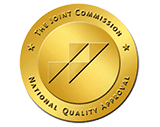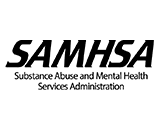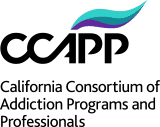From morphine addiction in the 1800s to the modern-day opioid crisis, drug epidemics go through cycles as common as the weather. Unfortunately, through the increase in the potency of substances, illicit and prescription drug abuse is becoming more dangerous and even deadly. Case in point, fentanyl, a powerful synthetic opioid, is 50 times stronger than heroin, which itself is roughly twice as potent as morphine (New York Times, 2019).
While the abuse of opioids such as fentanyl has taken center stage in recent years, another drug epidemic is bubbling underneath the surface – meth addiction. Now, the healthcare community is scrambling to find ways to deal with the increase in meth abuse, including using the popular medication assistance treatment (MAT) drug, naltrexone.
The Resurgence of Methamphetamine
Meth is a highly addictive synthetic drug with its main ingredient being pseudoephedrine – a stimulant commonly found in cold or diet medications. In 2005 Congress passed the Combat Methamphetamine Act, which placed pseudoephedrine behind the counter and under close inspection of pharmacists. Once the legislation took effect, meth cases dropped significantly. Shortly thereafter, opioid addiction began skyrocketing with the epidemic reaching a fever pitch in 2017 when the U.S. Department of Health and Human Services declared the crisis a public health emergency. The media’s focus shifted from meth labs taking over countrysides to doctor’s offices being raided by the DEA for over-prescribing opioids. And while the nation is cracking down on prescription painkillers – the demand for and distribution of meth has become a significant problem.
Reason Behind the Shift
A recent New York Times article reveals several reasons for the rise in meth, especially in the West:
- At the U.S. border, agents are seizing 10 to 20 times the amount of meth they did a decade ago. Methamphetamine, experts say, has never been purer, cheaper (around $5 a hit), or more lethal.
- Drug cartels have inundated the market with so much pure, low-cost meth that dealers have more of it than they know what to do with. Under pressure from traffickers to unload large quantities, dealers are even offering meth to customers on credit.
- States most affected by meth include Oregon and Oklahoma as well as border towns in Arizona, California, and Texas. However, cartels are actively looking at new markets on the East Coast.
Additionally, if a person is on meth, it more than likely came into the U.S. from Mexico. One agent recently toured a crystal meth lab in a Mexican jungle that the Mexican military said was producing 7 tons every three days (National Public Radio, 2019). With this alarming trend in meth production and distribution, overdose deaths involving the drug and other psychostimulants rose 21% from 2017 to 2018, according to the Centers for Disease Control and Prevention.
Meth, the Brain, and Naltrexone for Addiction Treatment
Chemically speaking, meth rapidly increases the amount of natural dopamine in the brain – making the desire to keep taking the drug that much stronger after each hit. The euphoric blast upon inhalation remains in the individual’s system for much longer, rewriting the brain’s reward centers, and sowing the seeds for a painful addiction (National Institute on Drug Abuse). And once a person tries to stop their meth addiction, withdrawal comes on fast and furious, including symptoms such as:
- anxiety,
- severe depression
- fatigue
- hallucinations and psychosis
- intense drug cravings
With the surge of meth addiction retaking shape in the U.S., healthcare professionals are looking for better ways to help patients deal with intense withdrawals. One addiction counselor and physician assistant, Nancy Beste, is taking a standard treatment for other addictions and using it as a new approach for meth withdrawal. At a medical conference, Beste learned about using naltrexone as medication-assisted treatment (MAT) for those suffering from meth addiction, “Early studies indicate that naltrexone, the same medication used to treat alcohol addiction and opioids, can work for some people addicted to methamphetamine (National Public Radio).” Beste decided to try the medication and gave a patient, Melinda McDowell, a prescription for naltrexone in combination with individual and group therapy.
McDowell, who tried quitting meth but suffered from intense meth withdrawal, including severe panic attacks, shaking, and hallucinations, claimed that three to four hours after she took the first pill, she felt better. And after the second naltrexone dose, the withdrawals lessened, “The shaking started going away. I wasn’t panicking. I could feel some relief. I knew there was something different,” states McDowell. She is now one year sober. Beste gave naltrexone to 16 patients who use meth, and the drug appears to have helped reduce the cravings for methamphetamine in half of them.
The Future of Meth Addiction Treatment
Medication-assisted treatment with drugs such as buprenorphine, methadone, and naltrexone are considered standard care for people with opioid use disorder. Still, there are currently no FDA-approved medications for meth addiction. And until this approval happens, practitioners like Dr. Keith Heinzerling, an addiction medicine specialist, are prescribing naltrexone off-label in combination with other medications for methamphetamine addiction to patients who are interested in trying it. He believes, “when combined with physician oversight and behavioral counseling, it can be an effective treatment.” He also cautions, “much is still unknown, and more research on drugs like naltrexone for methamphetamine is needed (NPR).”
While several research studies for potential treatments are underway, there are currently no FDA approved medications to treat methamphetamine addiction. The promising news is that meth addiction can be treated with several modalities such as cognitive-behavioral therapy, which helps patients recognize and effectively deal with situations that trigger substance use. We offer many treatment options such as affordable outpatient services, group therapy, EMDR, and individual counseling. You can recover from meth addiction if you have a proper treatment plan, professional care, and access to post-rehab services such as 12-Step and SMART Recovery programs. At Silver Lining, we understand the courage an individual must have to take that first step on the road to recovery, and we’re here to support you and carry you forward – call us today at (866) 918-5547.







